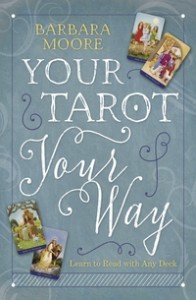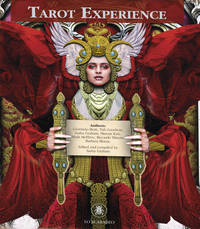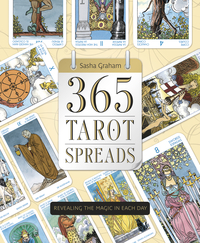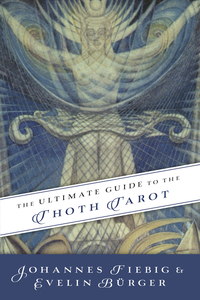Llewellyn Publications's Blog, page 48
February 15, 2017
Chakra Insight Oracle is One of Ezvid Wiki’s 2017 Best Chakra Cards!
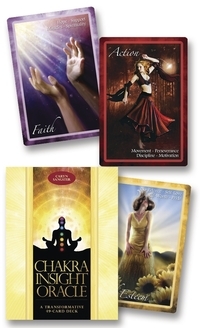
The Chakra Insight Oracle is one of Ezvid Wiki’s Top Chakra Cards of 2017, coming in at #2!
Founded in 2011, Ezvid Wiki was the world’s first video wiki, and is now among the top 3,000 websites in the United States; their YouTube channel has over 164,000 subscribers.
You can browse through the cards of the Chakra Insight Oracle and purchase the deck here.
Congrats!
February 7, 2017
Making the Tarot Your Own
Instead of telling you the one way to read tarot, Your Tarot Your Way embraces the reality that tarot has evolved continuously since its creation and that there is no one way. Each reader must discover his or her own way. To do that requires a lot of self-reflection and asking of some hard questions. Because tarot is a tool and not system unto itself, we—those who use the cards—impose our systems on tarot. So before you accept someone else’s belief system as seen through the cards, maybe consider your own and how it would find expression in the cards. Here are two of the many questions that Your Tarot Your Way asks you to consider.
How does the tarot work?
This is a big question with no one right answer. For most, the answer will be rooted in spiritual beliefs, but not always. There are some who read tarot with no particular spiritual connection (this is not to say the readers may not be spiritual, but that they don’t attribute any spiritual influence to readings) but instead take a psychological approach. Although I’m using the word “spiritual” here, I’m using it broadly and including any kind of metaphysical explanation.
The psychological approach will likely involve less emphasis on prediction and more on accessing the wisdom of the subconscious mind as a way of gaining understanding about a situation. Many with a psychological approach say that it is Carl Jung’s idea of synchronicity, or meaningful coincidences, that drive the process.
A spiritual approach may also have less of a focus on prediction or it may include specific predictive messages and advice, depending on what you think the goal of a reading is (more on that momentarily!). If you think you have a more spiritual approach, think about where the messages come from. Are they from a Divine being and to be considered absolute? Is your role as a reader more of a channel? Are the messages from your higher self or your intuition? If you are reading for someone else, are they from that person’s higher self or their intuition? Is intuition always right? Or are the messages from other types of guides or ancestors or angels?
When you were doing your reading, did you have any of these ideas in mind? Did you say a prayer or calm/ground/focus your energy in some way? If so, what do those actions say about your beliefs about a reading? Maybe for you, it is a combination of psychological and spiritual. Or something else entirely.
Nobody can say with one hundred percent certainty how the tarot works. We can only say how it works for us, how it fits into our understanding of how the world works. Answering the question “how does the tarot work?” will help shape so much of your work with the tarot.
There are also those who think tarot “works” because readers “read” their clients, starting with generalizations then asking questions and watching for clues. This is called a cold reading and I know you are not reading this book because you are interested in that process. You can learn it but not from me. Another reason that some think tarot works is that the predictions given influence the person so that they take the actions necessary to create a self-fulfilling prophecy. I think that this can be true. I know from my days as a college tutor. With some students, I could push them simply by telling them that I knew they could do better. Mostly, then, they did, even to the point of professors checking with me to see if I had any idea why the student was suddenly doing so much better. As a reader, you have a lot of influence, which means it is very important for you to think about what you are doing and why.
Tied into this is, of course, your worldview. For example, if you think that the future is predestined, then you would very naturally be confident in asking predictive questions, even far out into the future. Someone who does not believe that the future is set in any way, would never ask predictive questions because that is contrary to their worldview. If you are like most people, you probably fall somewhere in the middle. I think of this as the weather-forecaster approach. That is, the future can be predicted to an extent, just as the weather can be. But the thing to keep in mind with this approach is that the further out into the future, the less accurate the prediction and also anything can happen to change the current weather pattern. I think too many people, both readers and those who get readings, are too quick to relinquish their beliefs. It is surprising how many people who normally would say that they do not believe the future is predestined and yet expect detailed and predictive answers. This is very normal, though. Humans don’t like change, generally, and we usually turn to the divinatory arts when we are facing uncertainty. We crave prediction then, hoping to be told that everything will be okay. We will come back to this when we explore the purpose of a reading.
Where did the answer come from?
This question is an extension of “how the tarot works.” I’ve pulled it out as separate because I want you to really think about this. I’ve met so many people who get readings or even give readings without having an opinion or belief about where the answers come from. Add to this, “how do the answers come?” When you “read” the cards, what are you doing? Are you accessing Divine wisdom? If so, does it come from saying “the first thing that comes into your head?” Does it come from a careful analysis of the symbols? How trustworthy are the answers? How does your involvement as a reader and as a human (I assume you are a human…if you are a super being, my apologies!) help or hinder the quality of the answer?
Here’s an example of how answering these questions will affect your tarot practice. Let’s say you believe that the answers do come from a Divine being and that you are a channel for that wisdom. Humans have lots of prejudices and biases that we aren’t even always aware of. If you are a channel, then is it your responsibility to be as clear a channel as possible? If so, what does that mean? For some it means that as part of your spiritual practice, you include things that help keep you clear and open, whether it is meditation, chakra work, chanting, etc.
If the answers are from the Divine, then that may affect how you think about the information given in a reading. Many readers spend a lot of time studying how to counsel people. It is important to think about how you will handle what you might perceive as bad news. If the information is from the Divine, does that mean that you are obligated to tell the querent all the information that you see? If not, how do you know which information is just for you as a reader and which information is meant for the querent? Not all readers feel that they should disclose everything they see in the cards. This also ties into what kind of questions you will answer and ethics, which are discussed below.
If, for you, the answer is from the Divine but is instead a synchronistic expression of your subconscious, then what does that mean regarding the nature of the answer? Can answers from your subconscious be predictive or are they reflections of what is deeply desired and possibly not “true”?
Here is a final thing to think about, and it is something I’ve been struggling with recently (you never master tarot!). I happen to think that the answers come from the Divine. And here’s my thing. I don’t think that the Divine is an answer machine that pops out answers like a gum ball machine. I don’t know if the Divine always tells us the “truth.” Instead, I wonder if the Divine tells us what we need to know in order to have the life experience (and learn the lessons) we are meant to learn. This is, after all, what happened in the movie The Matrix, when the Oracle told Neo that he wasn’t The One (and we should all take our deepest spiritual teachings from movies, right?). After it became apparent that Neo was, in fact, the One, Neo tried to argue with Morpheus about it:
Neo: Morpheus. The Oracle, she told me I’m…
Morpheus: She told you exactly what you needed to hear, that’s all. Neo, sooner or later you’re going to realize, just as I did, there’s a difference between knowing the path and walking the path.
I’m still chewing on this, though, and I hope you do, too.
January 31, 2017
How to Raise Your Root Chakra Vibration
Readers, please enjoy this guest blog post by Stephanie S. Larsen, author of the new Discover Your Master Chakra.
Here are some non-conventional ways to raise the vibration of the root chakra. This chakra handles our physical well-being and also our communication with spirit in terms of intuition. For more on those topics, check out my book, Discover Your Master Chakra, and the first chapter.
Certain types of dance, such as Zumba and Mariachi, focus your root chakra in its proper place within your body. I would also argue that watching such dance, or listening to the music, would encourage the root chakra in the right direction. Don’t just passively take it in, though. Really connect. Realize how the music connects with your life, and your internal feelings, as you listen.
Working outside for long periods of time, such as in a garden or on a fence, or on a farm, will also help your root chakra realize its place in the natural world, and this will benefit you for the duration those negative ions last within your energy field. (The body must have more negative than positive ions in it to be “grounded,” and we get negative ions from direct contact with the planet.)
Doing things for others with the intent to build or create something allows your root chakra’s spiritual side to come to the forefront and helps you access further dimensions and the energetic complexity needed to re-energize and even, eventually, evolve. These intents (and the actions that follow) also help the teeth. If you are having issues with your teeth, help other people with projects that care. This is a more abstract treatment of the root chakra; however, the root chakra does channel build and drive, in community with others, with ease and grace.
Eating fruits, nuts, and whole grains will tend to place your focus in the middle of your body. Eating vegetables and nuts without grains will center you in a mindset related to physical strength. Grains tend to pull us towards upper chakras, though not always (rye doesn’t). Each food we eat relates to a chakra and the energetic vibrational resonance will take us there. Red foods, such as chili and apples, can also help.
Finally, cleansing the root chakra of its energetic issues is a good way to increase its resonance with optimal health and wellness of all kinds. In this way, cleaning out your closet and working on your car will connect you with more clarity for the root. Moving forward with job issues (getting them resolved and out of the way) or focusing on your goals will help your root chakra come into alignment with source.
I recommend focusing on these activities, when you do them, by keeping in mind that you’re helping your root chakra. You can also set a specific intention to assist you by saying, “As a child of the universe, I intend to ___________________ in service to my root chakra, so that it can be the best that it can be.” Thank you, universe!
Our thanks to Stephanie for her guest post! For more from Stephanie S. Larsen, read her article “How Money Flows at the Sacral and Heart Chakras.”
January 30, 2017
Shifting Our Thoughts: Is An Upgrade Needed?
Readers, please enjoy this guest blog post by Anysia Marcell Kiel, author of Discovering the Medium Within and the forthcoming Discovering the Healer Within (available August 2017).
 Many people are shifting their vibrations in dynamic ways—clearing old imprints, healing, and ascending. Part of this process involves upgrading old thought patterns and beliefs. I’m seeing a consistent trend in clients that involves a need to release outdated third dimensional thought patterns and belief systems that no longer serve them. In doing so, those belief systems are replaced with higher dimensional thought forms better suited for their lives. Our energetic fields are like computer systems: when one of the components becomes outdated, we need to upgrade it so it can align and integrate with all of the other working parts.
Many people are shifting their vibrations in dynamic ways—clearing old imprints, healing, and ascending. Part of this process involves upgrading old thought patterns and beliefs. I’m seeing a consistent trend in clients that involves a need to release outdated third dimensional thought patterns and belief systems that no longer serve them. In doing so, those belief systems are replaced with higher dimensional thought forms better suited for their lives. Our energetic fields are like computer systems: when one of the components becomes outdated, we need to upgrade it so it can align and integrate with all of the other working parts.
The clients in this trend experience similar symptoms of feeling stuck in life, restlessness, insomnia, and an overall sadness for which they can’t identify root causes. They’re doing all the wellness work they can on their own to balance themselves with yoga, exercise, healthy diets, and meditation, but they’re struggling a bit emotionally. This pattern indicates that there is an energetic imprint in the emotional layer of the aura between the physical and mental layers, which needs to be cleared and released.
We’re raised with certain belief systems ingrained in us from our childhood and parental dynamics. These beliefs are not only stored mentally in our brains but also energetically in our auric layers. The aura consists of several layers. The ones engaged in this situation are the physical layer, which is closest to the body, the emotional layer, which is located just beyond the physical, and the mental, located just past the emotional layer. Our current views of our lives are stored in the mental layer of the aura. As we grow, our realities shift and our childhood belief systems need to evolve, as well. For example, a woman may have been raised in a family where all the women married young, had children, and lived happily ever after. Perhaps this woman is in her early thirties, single, career-oriented, and not interested in having children even if she does find a partner at some point in life. The belief system about her concept of women in her family doesn’t match her current reality and so there is energy moving from the brain through the emotional layer to the mental layer, but because there is a disconnect between the brain and mental layer, there is energy stuck between the two in the emotional layer. As a result, she may have manifested an emotional response that is imprinted in the emotional layer of the aura.
If there is a disjuncture between the beliefs stored in the brain and the reality held in the mental layer of the aura, the energy doesn’t flow properly and it gets clogged in the emotional layer of the aura. There can be an emotional imprint of sadness or any other emotion, signifying an issue that needs to be addressed and cleared. The longer the imprint is left unattended, the deeper it sits in the emotional layer causing emotional dis-ease.
What worked for the other women in her family did not work out the same way for her, and that’s ok. When she changes her thoughts and accepts the choices she has made for herself, she clears the emotional imprint by its root and prevents it from resurfacing. Now the energy from her brain freely flows through the emotional layer and mental layers of the aura. In addition, shifting the thoughts to match her reality affirms her true identity and empowers her in a new way. Her solar plexus, the energetic center for personal power, expands and supports this new transformation.
Replacing and upgrading outdated belief systems that no longer serve us allows us to accept who we really are and fully embrace the lives we’ve created for ourselves.
Our thanks to Anysia for her guest post! For more from Anysia Marcell Kiel, visit her author page for her books and other articles.
January 25, 2017
Taking tarot to the next level
Tarot Experience is the second in a three part series. This second volume provides over 600 pages of intermediate information, spreads, and techniques. One section that I really like is “Working with Multiple Decks.” They describe some of the benefits of working with multiple decks, such as deepening your understanding of tarot, accelerated personal growth, historical study, and increasing ways to communicate with querents. Then they give some really great ways to work with multiple decks. My favorite, which I had not tried before, is called Defining Deck. It goes like this:
“The reader randomly shuffles the Major Arcana of a single deck. Three cards are dealt face up. These three cards become the positional cards defining the nature of each position. For example, the Empress, Hermit, and Temperance could define card positions meaning Productivity, Work, and Balance. Cards from a second deck are dealt on top of these positions and interpreted accordingly.
There is such useful and fun stuff in this volume. I think that even an ambitious or confident beginning reader would get a lot out of it. In addition, it is so beautifully designed and illustrated, it is a visual treasure as well as an informational delight.
January 11, 2017
Not just for tarot beginners
Tarot Fundamentals is the first in the three part series. This first volume provides over 600 pages of everything you need to develop a strong foundation in tarot. In addition to card meanings and how to do readings, this book includes lots of other information that many people don’t realize they need to know. For example, when someone goes out to buy their first tarot deck, they can be overwhelmed by the many choices. If they don’t know much about tarot, when they get their deck home, they might feel confused because it seem to match up with the book they just read or the deck their friend uses.
Tarot Fundamentals has a section called “Unmatched Illustrations” and talks about the reasons why some decks don’t seem quite right to someone. They cover some basic reasons such as sometimes decks are rushed and poorly designed. Sometimes decks are using a different underlying system. An interesting point they make is that sometimes decks have differences in emphasis. They write:
“A dramatically different illustration may emphasize a different aspect of a familiar meaning. For example, someone who associates “travel” with the Six of Swords may be very comfortable with the illustration for this card in the Universal Tarot. But upon seeing the same card from the Tarot of he 78 Doors, the reader may ask, “What does a young man surfing the Internet have to do with travel? Only upon reflection might the reader notice the maps and masks on the wall and conclude, “Ah! He’s researching vacation destinations!” or “Travel is seen as a metaphor, and browsing he Internet is just another form of travel.”
After describing some reasons for sometimes jarring differences in decks, they provide some ways to deal with them. My favorite is:
“Embrace the difference. Many readers, citing an obligation to honor the unique voice of each deck, set familiar interpretations aside. They embrace new meanings wholeheartedly. This process enable the reader to see the Tarot from a radically different perspective and enriches the library of memorized meanings the reader uses.”
There is a lot here for the beginner and even intermediate and advanced readers. In addition, it is so beautifully designed and illustrated, it is a visual treasure as well as an informational delight.
January 9, 2017
Into the Realm of Enchantment: Pop Culture and Magical Consciousness
Readers, please enjoy this guest blog post by Storm Faerywolf, author of the new Betwixt & Between.
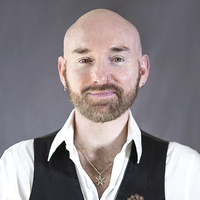 Magic is the heart of witchcraft. The casting of spells, the making of charms, the speaking of incantations… Whatever the particular method, or practice, or tradition, one thing has remained constant in my years practicing the Craft: the shifting of awareness into the ecstatic. Famed occultist Dion Fortune notably defined magic as “the art of changing consciousness at will.” This definition has served as a basis for the practices and philosophies of many successive witches and occultists since.
Magic is the heart of witchcraft. The casting of spells, the making of charms, the speaking of incantations… Whatever the particular method, or practice, or tradition, one thing has remained constant in my years practicing the Craft: the shifting of awareness into the ecstatic. Famed occultist Dion Fortune notably defined magic as “the art of changing consciousness at will.” This definition has served as a basis for the practices and philosophies of many successive witches and occultists since.
Often when the new student begins in the Craft we are inclined to assume that whatever altered states of awareness we seek will all be intense, earth-shattering affairs. Certainly intense spiritual experiences are within our grasp, but the truth is if our magical life consistently maintained a certain level of intensity we would very quickly burn out or become mentally unbalanced. Most often the shifts in perception that we are aiming for are seemingly small and are frequently imperceptible to the beginner. We often shift levels of awareness during the course of a normal day, largely without realizing it. Driving a car, daydreaming, reading, watching TV… we enter into light states of trance during each of these activities. By performing a regular practice we learn about our own personal ways of engaging the numinous and learn to pay better attention when these shifts occur, and even how to trigger them at will.
These shifts in perception are the same as those that occur when we are emotionally moved; when we are deeply engaged in creating art, experiencing poetry, singing, listening to music, or similar. An effective spell or ritual will engage our senses in an effort to trigger these subtle shifts; and since these triggers are personal in nature, they may be drawn from even the most mundane of sources.
I can honestly say that some of my most potent magical training has come from pop culture. I am not so delusional as to think that the spells depicted in The Craft or Charmed represent a viable way of working magic. But the artistic inspiration born of these things is altogether a different story. I am a fan of using whatever works. So it is in that spirit that I eagerly draw inspiration from works of art and from many sources. I have received as much magical inspiration from Crone’s Book of Charms and Spells as from watching episodes of Buffy the Vampire Slayer, The Dresden Files, The Magicians, or Salem. But my most valuable magical trigger gleaned from pop-culture is—hands down—from my early childhood, watching episodes of Bewitched.
The witches and warlocks would wave their hands and twitch their noses all to a hilarious and magical result. But by far what has stuck with me all these years was a sound…that of the little chimes tinkling in the background while the witches pronounced their spells in rhyme. To this day, when I wish to step into that magical state of enchantment I need only recall that little sound, and I can feel the shift begin to occur. In this state I will speak my spell, or light my candle, or cast my circle, or assert my will. It might sound silly to some, but in my view magic is the art of using whatever works to make things happen. The fact that what works for me might just as easily originate in a comic book as it might ancient myths just means that I have a wider array to choose from. (And I have fun doing it.)
Our thanks to Storm for his guest post! For more from Storm Faerywolf, read his article The Witch’s Crown: Sovereignty, Power, and the Faery Tradition.”
January 2, 2017
When Mindless is Better Than Mindful
Readers, please enjoy this guest blog post by Sharon Lipinski, author of the new 365 Ways to Live Generously.
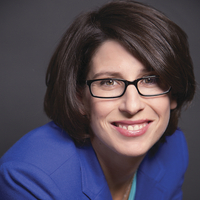 Some things you have to think about and some you don’t.
Some things you have to think about and some you don’t.
You don’t need to think about taking care of your physical health. You don’t need to think about having a mindfulness practice and nurturing your spirituality. You don’t need to think about spending quality time with your loved ones.
You may need to think about HOW to do those things, but you don’t actually need to think about whether or not you should do them.
The problem with having to think about doing them is that it requires that you make a decision, and making a decision requires you to call on your willpower. Willpower is a valuable but scarce resource that isn’t always there for you when you need it. Willpower is a form of mental energy and you use it to control thoughts, emotions, impulses, and performance. You’re using it constantly all day long for every little decision, every time you restrain a biting comment, or force yourself to answer that difficult email. You get one tank of willpower for everything, and if the tank is empty due to overuse, physical stress, or emotional stress, then it can’t help you do the right thing.
But you don’t forget to brush your teeth, and you don’t talk yourself out of your morning cup of coffee. Those things happen automatically because they’re habits. A habit is a routine of behavior that occurs regularly and tends to occur unconsciously. Habits bypass your willpower tank because they don’t require you to make a decision. Instead, neural wiring inside your brain is triggered that causes you to automatically launch into specific behaviors at specific times in specific places. It’s habit that causes you to reach for a light switch when you walk into a bathroom, order the same drink from the same coffee shop, and have the same old fight with your significant other.
By all means, be mindful about how you take care of your health, spirituality, and relationships. By all means, be mindful while engaging in these behaviors. But be mindless when it comes to doing them. There is no decision to be made here. Taking care of your health, your spirituality, and your relationships are fundamental to your well-being, and when these are habits, you can be happier, healthier, and more productive without thinking about it.
The reality of your daily life is the result of the habitual actions you take and decisions you make every day. Intentionally make a habit of the thoughts, beliefs, and behaviors that will serve your greatest good and help you live your best life
Our thanks to Sharon for her guest post! For more from Sharon Lipinski, read her article, “The 7 Habits You Must Adopt in 2017.”
December 21, 2016
A Special Christmas Day Spread
From 365 Tarot Spreads by Sasha Graham
Opening a Gift Spread
This spread is an unexpected present for you. Unwrap to discover what the magic of the holiday season has in store for you all through the year.
Take a moment to thank the tarot and honor yourself for all the soul-searching, divining, hard work, and effort you put forth this year. Make a solid promise to enjoy your day, relax, and be thankful for the goodness in your life.
Shuffle your deck. When satisfied, remove the top five cards without looking at them. Place the remaining deck in front of you. Build a house of cards—or, in this case, “wrapping” around your gift—by creating a five-card house around the deck.
When ready, begin to remove the “wrapping” of your deck, one card at a time. Contemplate each card as you remove and find the message within it. When you have removed all five cards, the deck remains in front of you.
The top card is your big gift. Turn it over to receive the gift tarot bestows upon you for the next year. This is your special card, containing a meaning just for you.
December 7, 2016
Information is Everywhere
The Ultimate Guide to the Thoth Tarot by Johannes Fieberg & Evelin Burger
Even if you don’t use a particular deck, there can still be useful information in a book about that deck that you can apply to other decks. For example, in The Ultimate Guide to the Thoth Tarot by Johannes Fieberg & Evelin Burger, they provide 10 Helpful Interpretation Tips. This one can easily be applied to any deck:
Every Single Symbol is Ambiguous
For example, let us consider the symbols Dove and Snake, both of which are counted among reoccurring tarot motifs. The dove is an attribute of different love and wisdom goddesses, the sign of the Holy Ghost, the peace dove, and a symbol of spirituality and sexuality. But also: it is the embodiment of aloofness, hysteria, and deafness. The snake warns of base urges and false instincts. However, the curled snake is also a symbol of higher development, of the wisdom of learning through experience. This is how it is with every detail in every card. Thus after many years, tarot card spreads are not boring, because one always discovers new meanings and symbols from the cards.
Llewellyn Publications's Blog
- Llewellyn Publications's profile
- 243 followers


